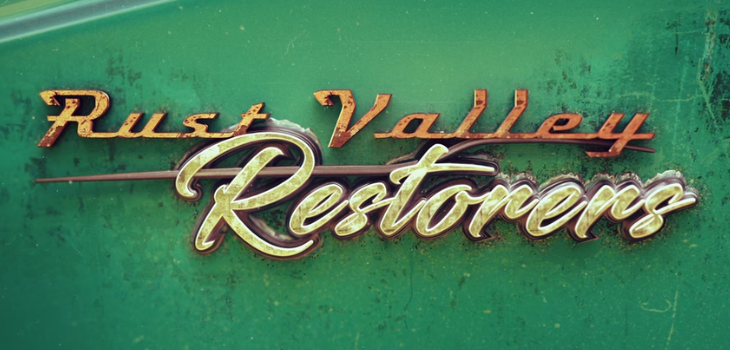 Literary Analysis
Literary Analysis
Netflix’s “Rust Valley Restorers” is Unexpectedly Poetic
A POET’S ANALYSIS OF THE CAR RESTORATION REALITY SHOW SET IN TAPPEN, BC
A Classic Classic Car Show
Recently released on Netflix after originally airing on Canada’s History Channel, Rust Valley Restorers (August 2019) fits right into the ubiquitous car fixer-upper reality genre. It showcases a grungy old guy who owns lots of classic cars that need some serious restoring, but he’s running out of time and money to fix them all. So he opens a restoration shop — Rust Bros Restorations — to catalyze the automotive revivals and bring in money.
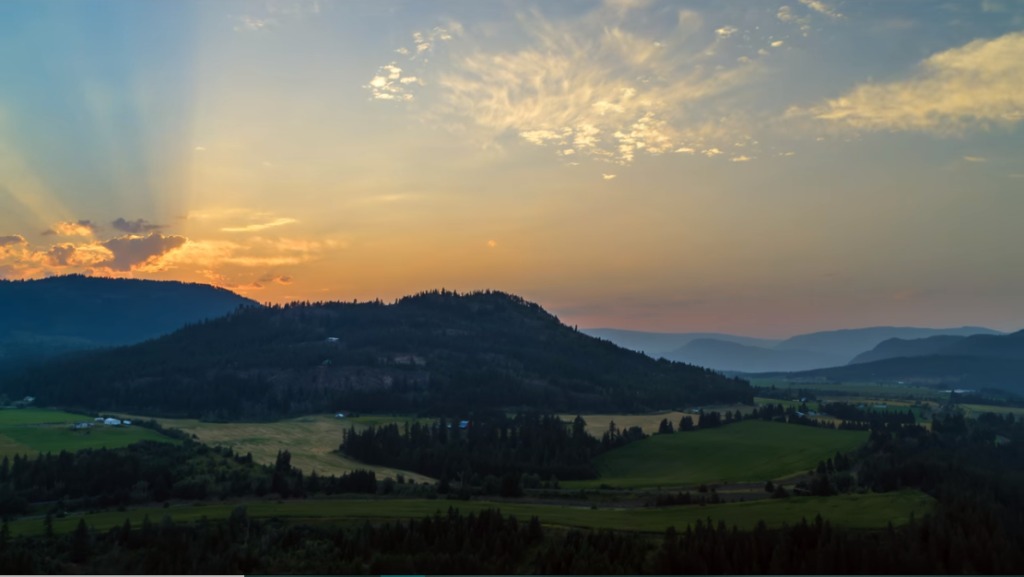
Setting, Plot, and Characters
The show takes place “in the remote interior of British Columbia, somewhere between the desert and the Rocky Mountains,” as the narrator describes. Mike Hall, the shop owner, explains that, “We call it Rust Valley. There are literally hundreds and hundreds of classic cars waiting to be restored. The air is dry and it preserves them, so it’s become the center of this amazing classic car culture.” Over the past 40 years, Mike has accumulated more than 400 cars, most of which hunker like dozing bulls in a grass field.
There are three main characters on Rust Valley Restorers:
- Mike Hall, 62, the shop and car collection owner. Sporting bedraggled grey dreadlocks, he’s always dressed in a black muscle tank, dirty pants, and ill-fitting glasses. He’s much too attached to his cars to turn a profit with his shop. He unintentionally thwarts business with an ideal of how the cars should look before he can sell them and who they should be adopted by.
- Connor Hall, his 30-ish son, mechanic at the shop. Clean-cut and perpetually the brunt of his father’s poor business decisions.
- Avery Shoaf, late 50’s, Mike’s best friend and a mechanic extraordinaire at the shop. Danny Devito-esque man with Einstein hair. Jovial jokester who’s an engine-genius.
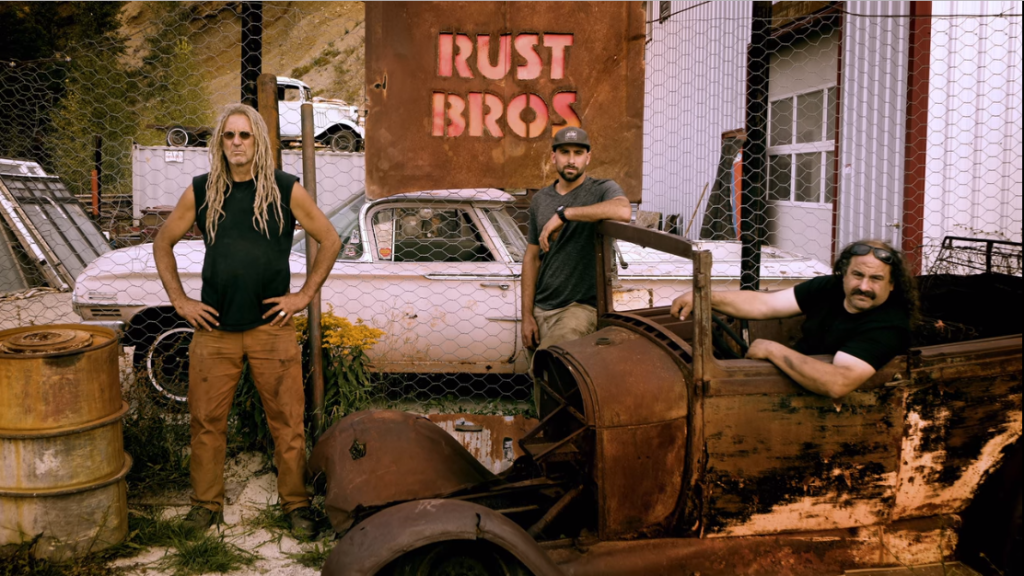
Fluttering in and out of the episodes like moths are fellow shop workers, neighboring mechanics, and townspeople, but the centrifugal force is Mike, around whom Avery and Connor revolve.
The series feels scripted at times. There’s always an easily identifiable hiccup that must be solved — e.g. a crucial part goes missing — and which, of course, always gets solved. Throughout, twangy country-rock music flails all over the footage, evoking rinky-dink towns and rustic vibes. In each episode, a vehicle or two inevitably morphs from grunge to twinkle.
So, on one hand, this show is exactly what’d you expect from a feel-good car restoration show: greasy men who never wash their hands taking apart cars, making fart jokes, nicking their knuckles, and spouting a bunch of classic car terminology that the average watcher won’t understand. Mud, oil, metal, acid, rust, rocks, grass, sun, sky, rain, weeds, and snow drench the show.
And it’s precisely this intensely elemental imagery that makes Rust Valley Restorers more poetic than it probably should be. Yes, this car restoration reality show contains, at its core, a visceral lyricism as paradoxically simple and complex as one of the rusty metal husks waiting in Mike’s field.
Before we move on, I should define poetry relative to Rust Valley Restorers. I don’t want to degrade poetry through this analysis, nor do I want the literati to doubt my aesthetic taste. If you watch Rust Valley Restorers and expect scintillating stanzas, musicality, and elevated diction ruminating on the meaning of existence, you’ll be sorely disappointed. You’ll wonder how I can think a show featuring a shot of Avery’s butt crack in a car rolling down an open highway can be poetic.
By poetry here, I mean latent philosophy wreathed in palpable imagery. I suspect most viewers will be so distracted by the goofy antics and the cool cars, they won’t even notice it. But digging up the poetic amid the hyper-prosaic is a practice that any artist can apply in their creative endeavors; indeed this is the essence of the poetic endeavor. Some material offers mere dirt, but in others we can find potatoes — compact, russet nodes ripe for contemplation.
Rust Valley Restorers: The Philosophical Themes
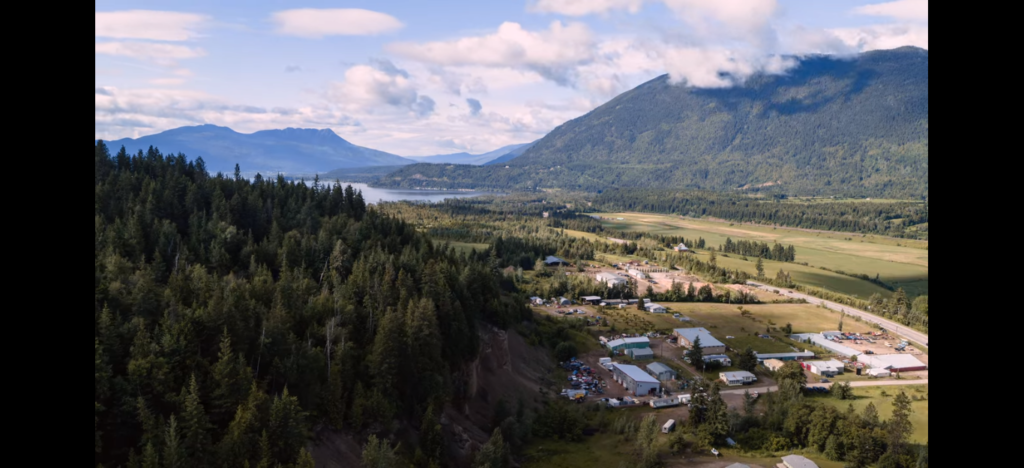
Man Versus the Elements
The setting of Rust Valley Restorers plays the most critical role in the TV show’s unexpected poetry. “Rust Valley” a.k.a. Tappen, British Columbia is a region of fecund greenery when we arrive: green fields, green foothills swelling into green mountains, green conifers yearning along the circumference of a green valley flush with green meadows. There’s even a perfectly pearly lake lapping at the edges of the land. Transitional scenes frequently show time-lapse bird’s eye views of the landscape, treating the audience to puffy white clouds and their shadows roiling across a lush piece of earth. It’s a location that’s inherently poetic, no matter the footage’s context.
And rusty cars are inherently ugly. Shells of what they should be, these oxidizing cankers of machinery are polar opposites of the landscape they nest in. Indeed, in the first episode’s first minute, the camera swoops from the idyllic overview of the valley down to Mike’s field, where his car collection huddles like a sullen, flaking herd. The unnatural occupying the natural. It’s a jarring sight: a massive cluster of fading mulberry, red, sunflower, cerulean, candle wax, etc.-colored frames sitting stagnant amidst the vibrant verdancy. There’s even a defunct school bus hulking like an orange buffalo in the shot.
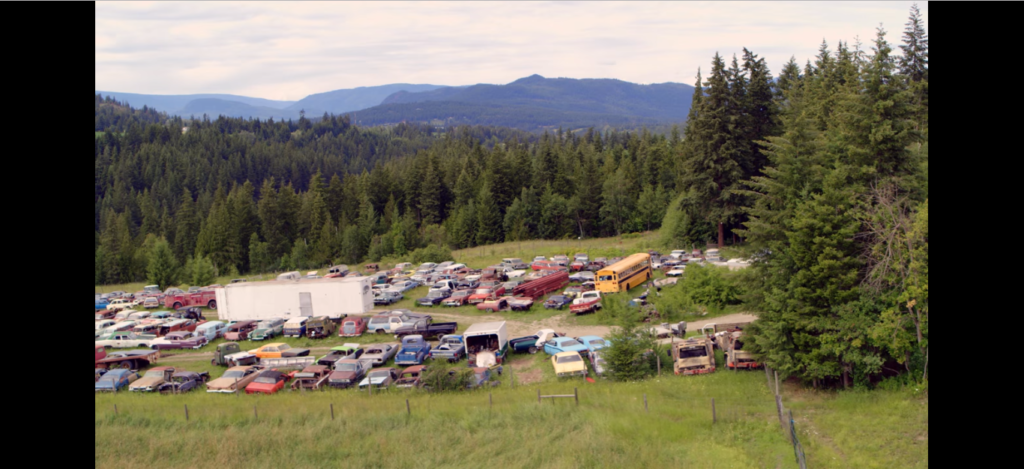
But it’s precisely this tug of opposites that leads to effective imagery and conflict throughout the show. The hard, still cars amplify the exertive, organic enchantment of the natural surroundings, and vice versa — the unsullied landscape emphasize and accelerates the highly tactile atrophy of the cars. It works because in this tug-of-war between nature and machinery in Rust Valley, nature is overwhelmingly winning. The paling matte hoods and fenders, the neck-high weeds, the pervasive iron oxide, the slowly decomposing spongy seats and dashboards, and the threat of snow that arrives late in the season are all evidence of the agrestal surroundings’ power. No matter that Rust Valley has become a hub of classic car culture because the clime preserves the cars better than elsewhere: even in this haven, the earth eternally repossesses doodads.
Man Versus Time
Thus, the catalyzing conflict of Rust Valley Restorers isn’t just Mike’s overtly stated need to make money — it’s that he and his team have to battle the corrosive crush of time as enacted by the natural elements. The vehicles sitting in his field are conspicuous proof of this relentlessness. In other words, the biggest antagonist on the show isn’t debt, competitor car restorers, or Avery’s short-temper, but the organic decay that reclaims men and cars alike. Mike even says in the opening credits in regards to his cars, “I’m running out of time to restore them all,” and in the series premiere, he proclaims, “I’m 62 years old almost. Now’s the time.” There’s a constant sense of time running out on Rust Valley Restorers, both in terms of life and object, and the premise taps into an existential anxiety that permeates poetry and philosophy. Man versus time. It’s a story as old as recorded time.
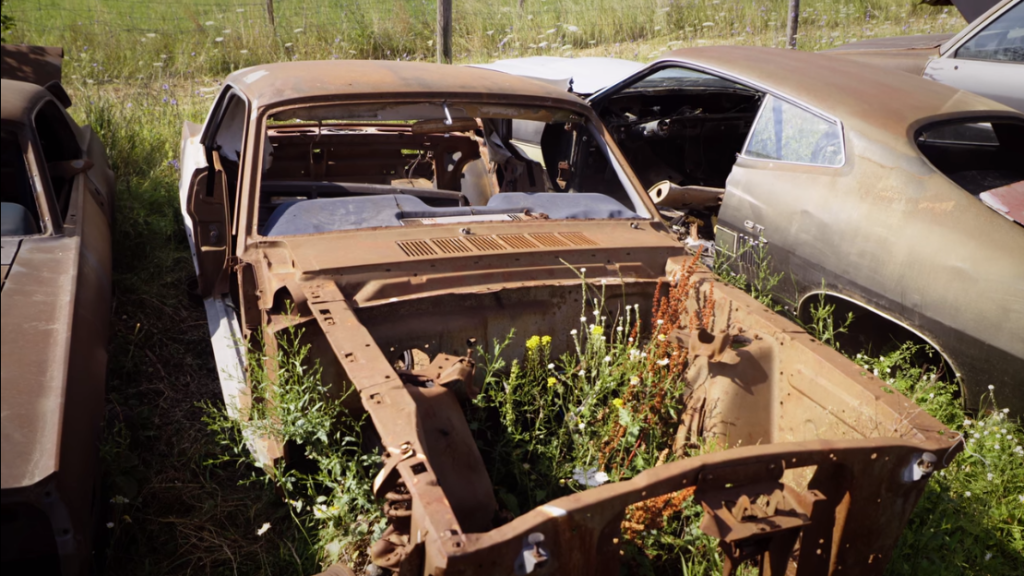
The satisfaction of seeing a classic car restored is surely rooted in the joy of the object itself. To transform a rusty skeleton into a gleaming, purring piece of machinery deeply satisfies most people simply because the reformed jalopy looks so nice and so clean. Renewal woos human beings. For classic car aficionados, the esoteric pleasure must be ten-fold, to have a vehicle from the past authentically here and working in the present, and to indulge in the details of the parts and labor that enabled this revival.
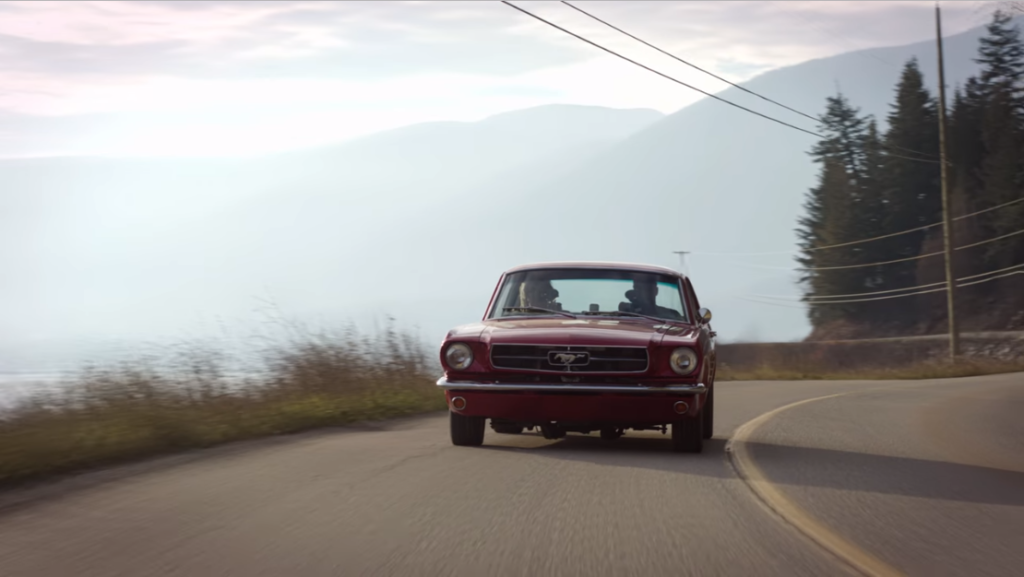
But the universal attraction of restoration becomes even clearer on Rust Valley Restorers. Each time Mike and his team finish a car, they’re defying time via the glisten of paint, the growl of the engine, and the gleam of chrome. The fact that the restored vehicle will likely someday once again become a rusting husk in a different field doesn’t enter the viewer’s mind. There’s only the pleasure in seeing the dead extracted from the meadow of crushing time and restored to life so successfully that they can literally move through space again. Each success not only brings in money, which ensures more cars can be restored, but also the overwhelming sense of decomposition fended off — if only briefly.
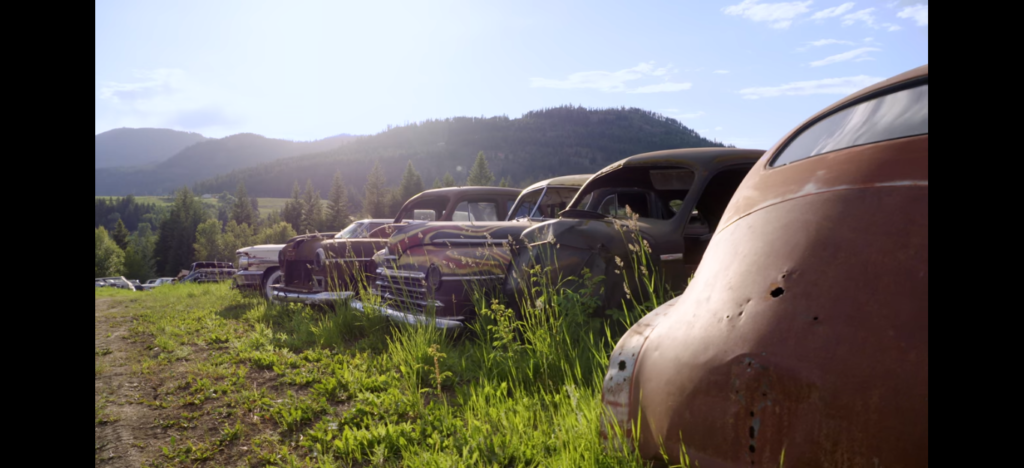
Rust Valley Restorers Versus Car Masters: Rust to Riches
The verve of Rust Valley Restorers comes down to the omnipresent tension between the natural setting and the manufactured objects. Indeed, slightly perturbed by how moved I was by what-should-be-a-stupid reality show, I tried watching Car Masters: Rust to Riches to test whether I was just mired in a sentimental mood. In this series, a Temecula, CA-based body shop restores/customizes old cars to trade and make money. It’s pretty much the same premise as Rust Valley Restorers and the title even contains the keyword “rust.” But the location is very different. It’s cloistered and suburban. Much of the footage happens inside the shop, and old cars are plucked from inside garages and oppidian backyards. When the Car Masters crew wants to test out their handiwork, they have to drive out into a well-paved parking lot filled with contemporary cars. The setting feels like those ubiquitous business complexes where you go to get your taxes done or have your computer repaired.
Unfortunately, this environment completely amputates the element of time and decay from the show. I felt like I was in my present present, where we’ve built cities that enable us to be indifferent to time and nature on a daily basis. The cars themselves are just as dilapidated as on Rust Valley Restorers, but the forces behind that decay are almost nonexistent on Car Masters. The viewer isn’t required to interact with them through cinematography and setting. The objects that the show’s plot revolves around are already deteriorated and thus detached from the process behind that deterioration. It’s a “Before and After” show, whereas Rust Valley Restorers is an “In-Progress” show. Car Masters is entertaining, but Rust Valley Restorers is inescapably ontological.
Poetic Imagery in Rust Valley Restorers
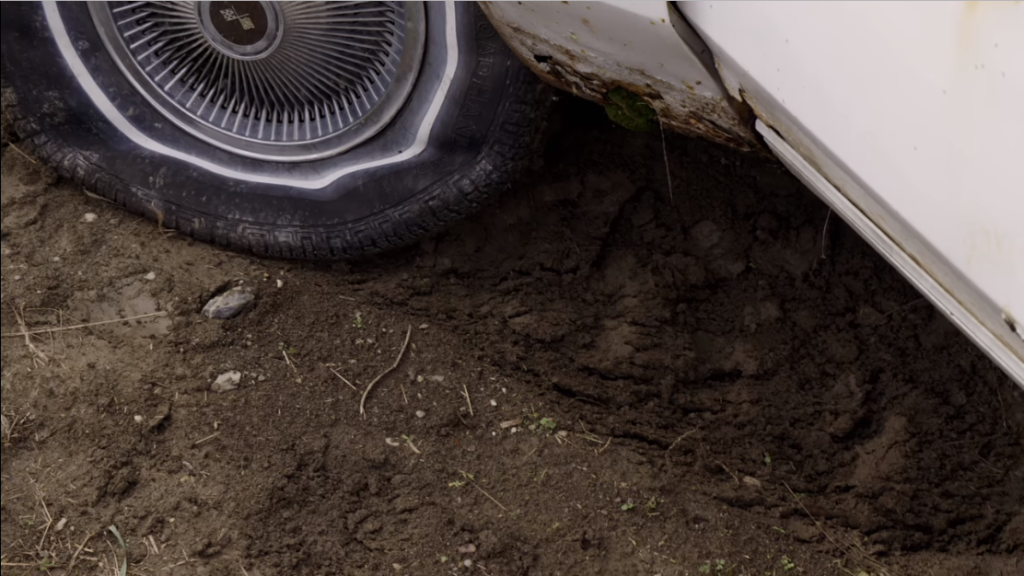
Another reason why Rust Valley Restorers feels poetic is because it’s so sensory-heavy, which immerses the viewer in the show’s environment. As with any television show emanating through a screen, we ostensibly only experience sight and sound. There’s the pfffft of an old engine running. The knock-knock-knock of a motor missing. The grey sheen of grease coating Mike’s arm hairs. A bright red gas can carried through a pickle-green field. White paint on a mud-speckled-windshield. A gleaming silver neodymium magnet hovered over the stretched-out, oil-slick accordion of a filter. Indeed, sight and sound frequently propel the show’s action: the mechanics must look for and listen to in order to test and rebuild.
But the solidity of the parts being worked with, and the mechanics’ perennial intimacy with grime also infuse the show with a distinctly kinesthetic and tactile feel not always present on television. Fingertips trace warped steel. Algae-green battery fluid splatters onto a polished concrete floor. A wood plank kerplunks onto Connor’s foot. A ratchet wrench twists off nuts and bolts. A pry-bar slips and pins a lip against a tooth. A soft alien-green cloth polishes a silver Satellite decal.
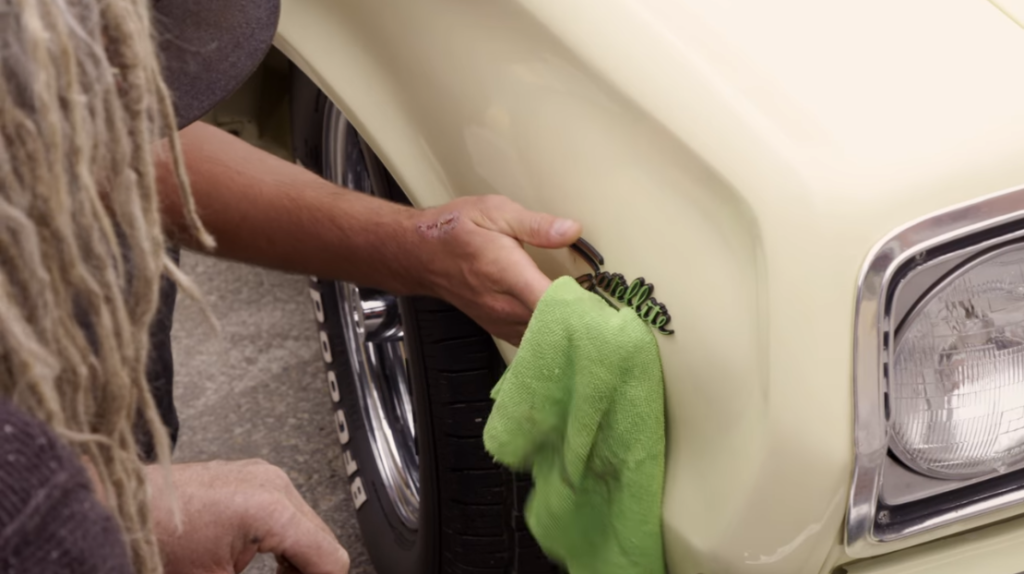
Similarly, the workers on-screen engage so closely with the objects around them — frequently with their faces — the viewer ends up vicariously immersed in the olfactory and gustatory experience of fixing cars in Rust Valley. Smoke billows up from an engine into Avery’s mouth. Mike rips out a backseat as his nose hovers above rodent droppings. Mike eats a stalk of rhubarb straight from a backyard garden. Mike sniffs oil he slicked off a dipstick.
As with any good writing, Rust Valley Restorers taps into the audience’s five senses, often engaging multiple simultaneously, and curates a grotesque synaesthetic participation in the mechanical action amid the rural environs. The show offers a virtual escape into a rich realm where everything is louder, brighter, closer, stinkier, and more pungent. It’s an illusion of an experience for the audience, but isn’t every poem?
The Narrative Arc of Rust Valley Restorers
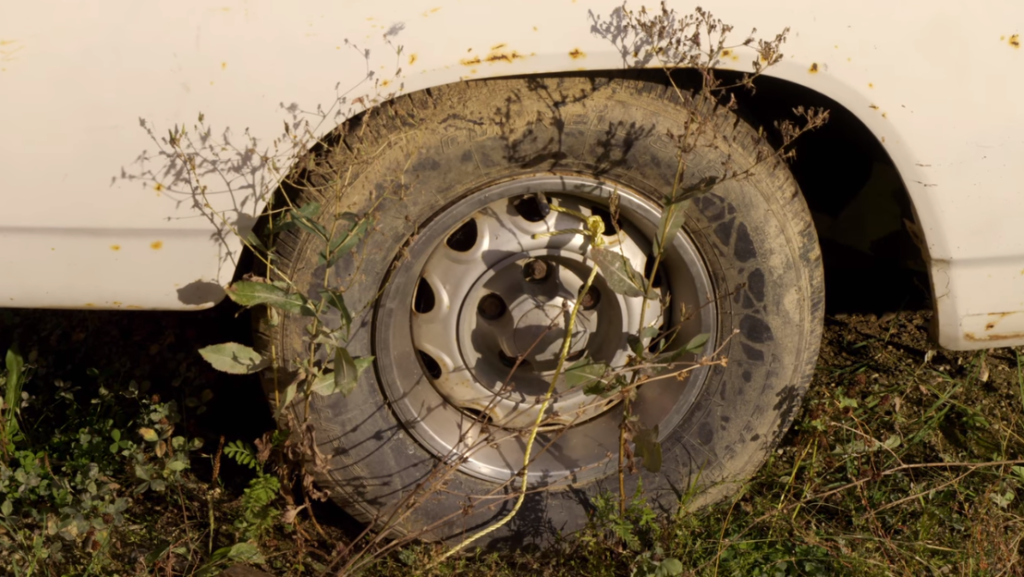
The aforementioned philosophical conflict of Rust Valley Restorers plays out in microcosm in each episode via plot and sensory imagery, but is also part of a larger narrative arc grounded in the anticipatory angst of the changing seasons. As the series progresses, time and nature press increasingly closer. Not only does Mike need to drum up business because he’s not making much money, there’s an added sense of urgency because winter’s coming. With winter, comes snow that can crush the roofs of soft-top cars, that can cave in trailers, and that keeps clients from the shop. It’s a force strong enough to stop the valley’s machinery in its tracks. Leading up to this, we’re presented with scenes and sound-bytes that reinforce the immediacy of time and nature.
Episode 1: “Go Big or Go Home”
“Go Big or Go Home” begins with Mike and Avery lumbering through Mike’s field, hunting “for a car they can restore and sell fast to get some money in the bank.” For example, there’s a 1970, 440, four-speed RT that sits tireless, metal sinking into pappy ground. Painted lime green, the car is missing most of its front end, gaping like a space where a molar should be. The camera shifts inside the car to reveal innards overtaken by twigs and dirt. Thus, our first experience with Mike’s collection is one of rot and ruin conducted by organic forces.
Mike explains that it’s hard to pick one car to restore because, “there’s so many cars that should be brought back to life.” Immediately, we’re pulled into a narrative that these vehicles are living beings that can be resuscitated. Mike’s own existence is inextricably intertwined with these machines that he describes as his “legacy.” Picking the right one is a matter of life and death in the sense that in order for one car to live, the others must remain dead in the field, because Mike is only one man with a limited amount of life-time and money.
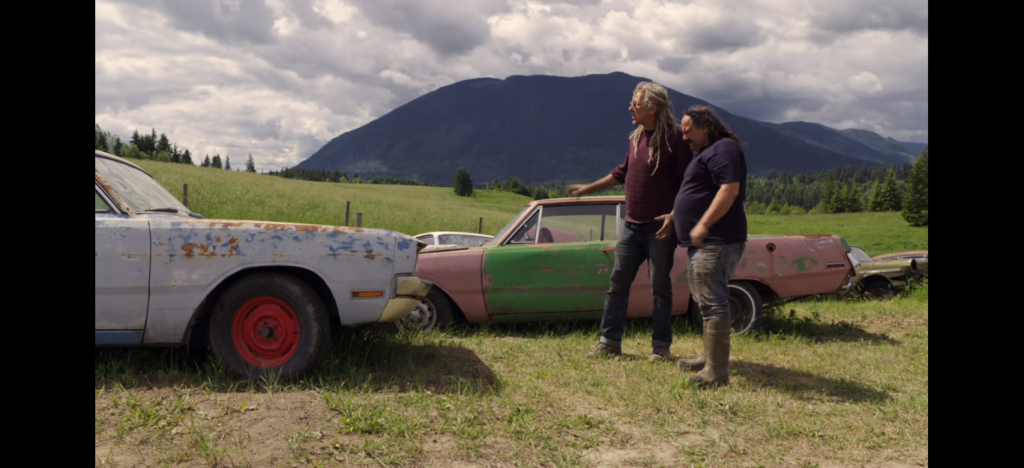
We’re then shown a sky blue Dodge Dart Swinger. Some of the paint has corroded off, such that nimbostratus clouds appear to swirl over the car’s mottled body. It’s a strangely accurate mimicking of the enormous sky looming over the entire scene. This surface-level aspect of the car is utterly unimportant to the episode. What matters is that the motor still runs, there’s no rust under the hood, and they have another Swinger to pull parts from to make this a valuable restoration. But such imagery is still extant; behind Mike’s dirty dreadlocks, the mountains and the sky loom. In other words, the tangling of the elements around the men and their cars is unavoidable, whether the camera focuses on them or not.
Which it does, frequently. For example, the subsequent shot cuts to a close-up of another car’s exposed engine surrounded by purple thistles. A fat groundhog sits on the motor, seemingly listening to the men hoot and holler. The following shot captures another groundhog flickering through a broken windshield into the front seat of an old, tallow-white car. This playfully curated set of images intentionally reinforces how very interwoven nature is with the junk sitting in Mike’s field.
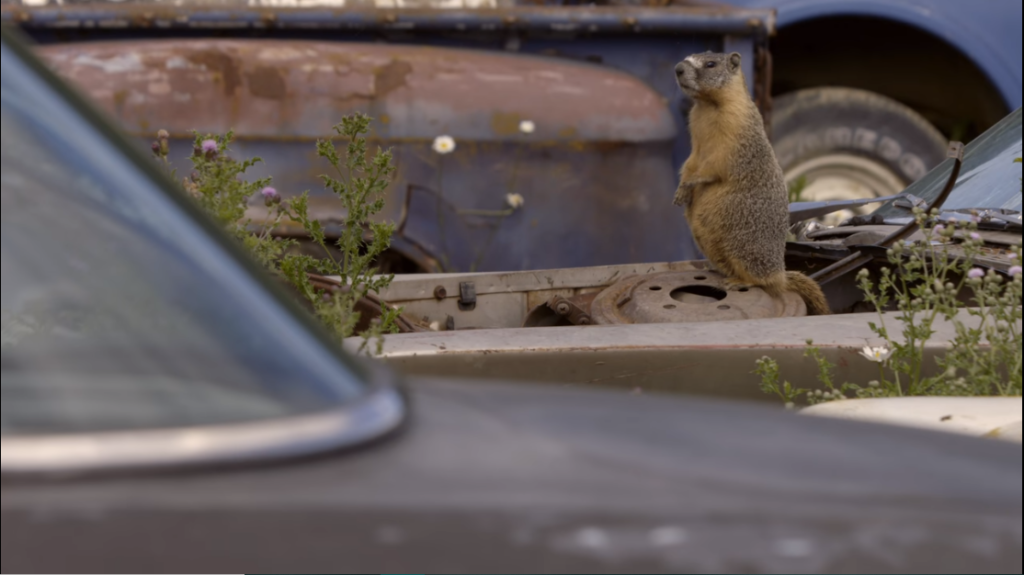
Indeed, these groundhogs are reoccurring characters on the show. Like the sweeping views of Rust Valley, each episode includes at least one scene with the small mammals clambering around the cars, ongoing evidence that these automobiles really are being overtaken by nature. It’s both silly and serious: they’re mascots and pests, intruders and original inhabitants.
Mike and Avery haul the Swinger back to the shop in a great flurry of hooks and clangs, and set about trying to get the engine working. The scene is an indulgence in primal messiness; they flood the engine and it catches fire, with apricot-orange flames dancing dangerously close to Mike’s filthy hair as he leans close and blows it out like a caveman.
At this point, both men are already coated in whatever coated the car: dust, rust, dirt, grease. Indeed, they must accept this layer if they want to fix the vehicle. They have to reach in, sit in, climb under, yank on, slide across, and so on. As they do so, they’re quite literally taking on the elements and they do this every time they restore one of the cars from the field. It’s simultaneously repulsive and liberating to see such a tangible build-up of grime, such that the dirtiness obtains a pungent synaesthesia that emanates through the screen. We can almost feel Rust Valley’s grit on our own skin.
Each episode includes a secondary restoration narrative and the premiere involves fixing up a ’66 Lincoln Continental for a client. Mike takes the gig, but commits to a deadline that the rest of the team realizes is much too quick for the amount of work required. Time rears its ugly head. This is reiterated by the subsequent montage interlude featuring footage of two old trucks perched atop storage trailers overlooked by conifers and the periwinkle, star-sprinkled sky rotating above the stationary machines. Time passes as the old men and their machines below stand still. The interlude is functional in that it indicates the expedited flow of time within the episode’s narrative, but it’s also beautiful and universal: everyone on earth is subject to this rotation, this passage, some ultimate deadline.
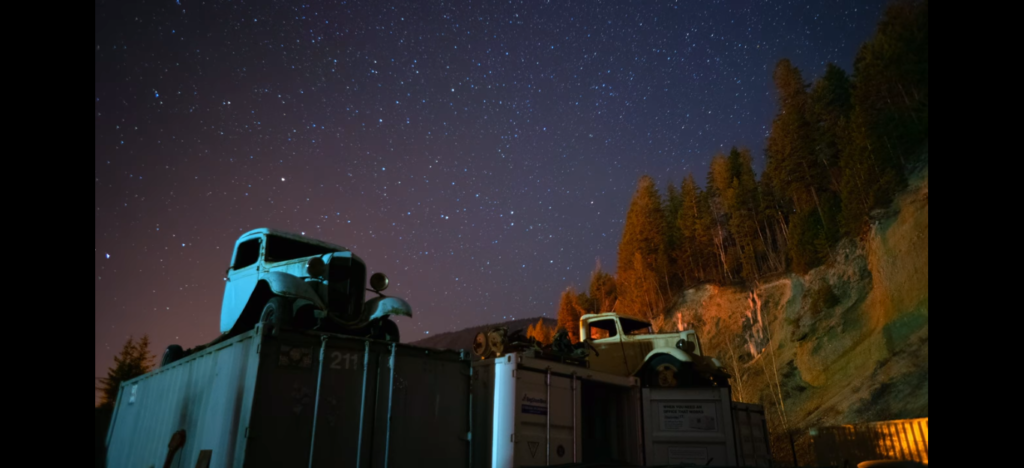
And then, a few scenes later, Avery farts near Mike in a trailer. Is a fart the opposite of art? Yes, yes it is. And yet, the premise of Rust Valley Restorers is based on contrast: take a car that’s more cadaver than machine, and turn it into something sleek and clean. Accordingly, at the episode’s end, the rusty sky blue Swinger with seats spilling stuffing like mashed potatoes has been transformed into a bright pink muscle car roaring down the road, like a restarted human heart. And it works. Through the juxtaposition, a bizarre poetry burbles up, with the recognition of it depending on the precedent decrepitude.
Mike describes his 40-year-in-the-making car collection and restoration aspirations as “metallic hallucinations.” This is exactly what the dormant collection looks like within the landscape. The cars, made of natural materials distorted into unnatural forms, shapes, and colors, hibernate like fantastic, immobile creatures in the meadow that’s slowly absorbing them.
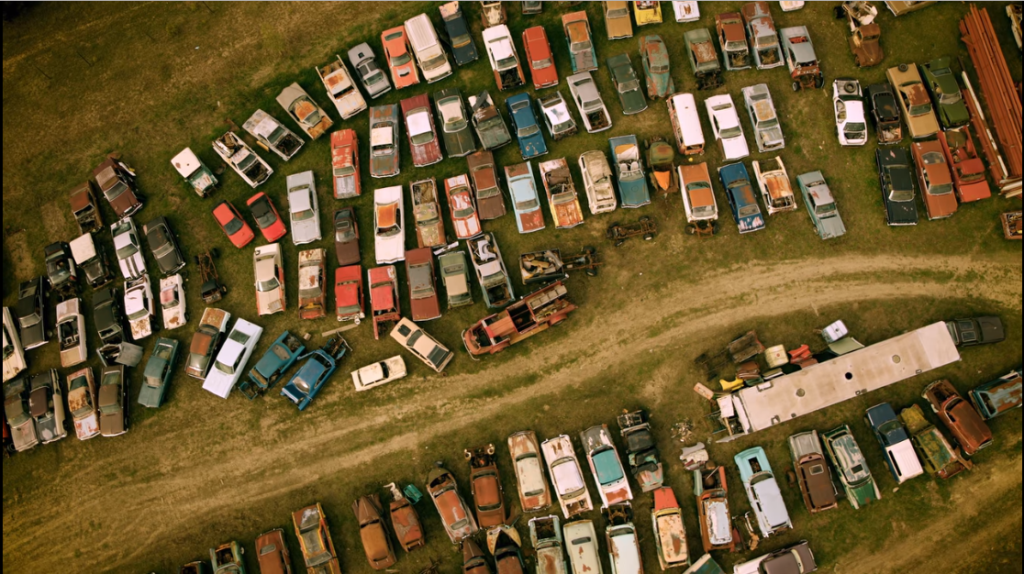
Episode 3: “Going into Battle”
In this episode, Mike pronounces that, “Time waits for no man.” Certainly a stale adage, but also a spot-on distillation of the basic conflict coursing throughout the show and human existence. Mike’s consciousness of his own mortality’s ticking clock infuses the narrative with a restless sense of urgency that can only be partially diluted by the rowdy behavior of the aging men on-screen. No matter how much he and Avery joke around, the heaviness of impending senescence — or even death — always comes sniffing around the edges through little comments like these, and through the conspicuous passage of time as evidenced by the vegetative growth and weather around them.
Episode 4: “Rustang to Mustang”
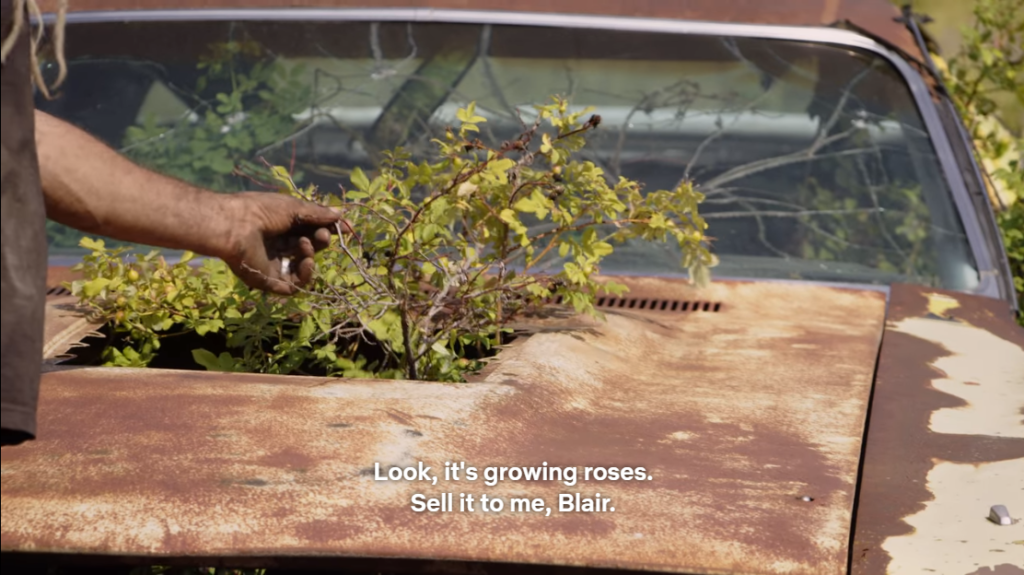
Episode 4 occurs in the heart of summer, but even during this more temperate time, nature literally permeates every nook and cranny. Mike and Connor visit a neighboring car collector’s yard, seeking parts for a Mustang, and come across a series of Chargers — ocher, black, and grey shells being consumed by oxidation. A rose grows from the hood scoop of one and at the sight, Mike exclaims, “Look, it’s growing roses.” Across Rust Valley, nature continuously pushes through and finds ways to persist, such that a rose can sprout through a car hood. Even more exceptional in this shot is the crush of greenery visible through the windshield in the background. A creeping, skulking presence sits behind the wheel. One can imagine the flora driving the Charger off in the deep of night or totally consuming metal while the men play with their silly little engines.
Episode 5: “A Smashing Success”
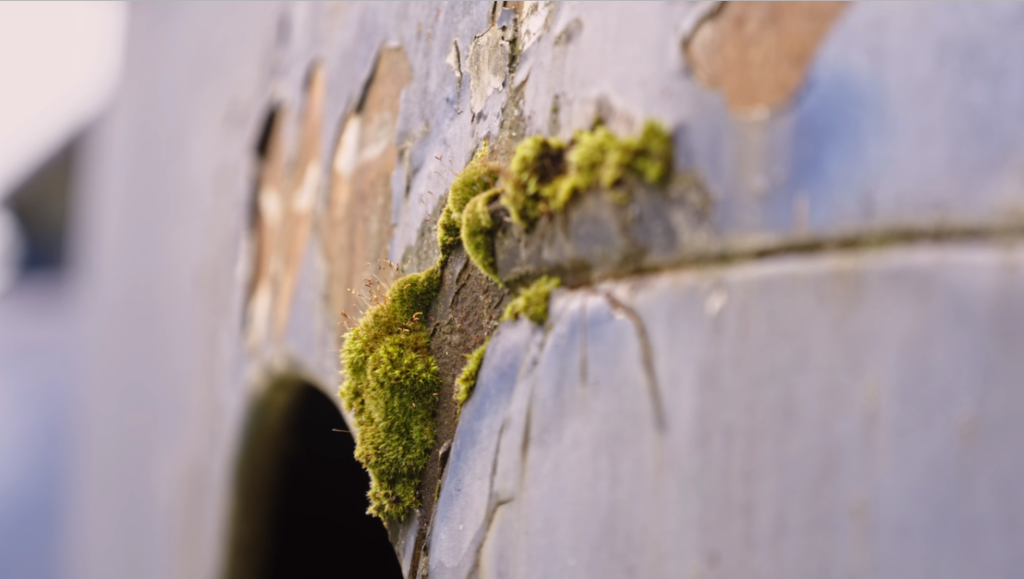
After a close-up shot of fuzzy moss clinging to a flaking, hard fender, Connor remarks that, “With summer half over, we need more clients,” and the narrator annotates this with, “In the restoration business, summer is the busy season. Profits made now keep them afloat through the winter.” The show is quite conspicuously outlining the plot’s primary conflict. Time, as manifest in the seasons and the weather they bring, will soon suspend the very existence of Rust Bros Restoration.
Episode 7: “Rusty Dreams Come True”
The changing seasons become inescapable in the climactic and climatic, “Rusty Dreams Come True.” The episode synopsis explains that, “With winter approaching, Mike sets out to sell a ’64 Ford Fairlane and a beautiful bare metal ’41 Ford Super Deluxe before his buyers fly south.” From the blue-sky, knee-high weedy footage of the previous episodes, we transition into a realm of ghostly mist, pewter air, and amber trees.
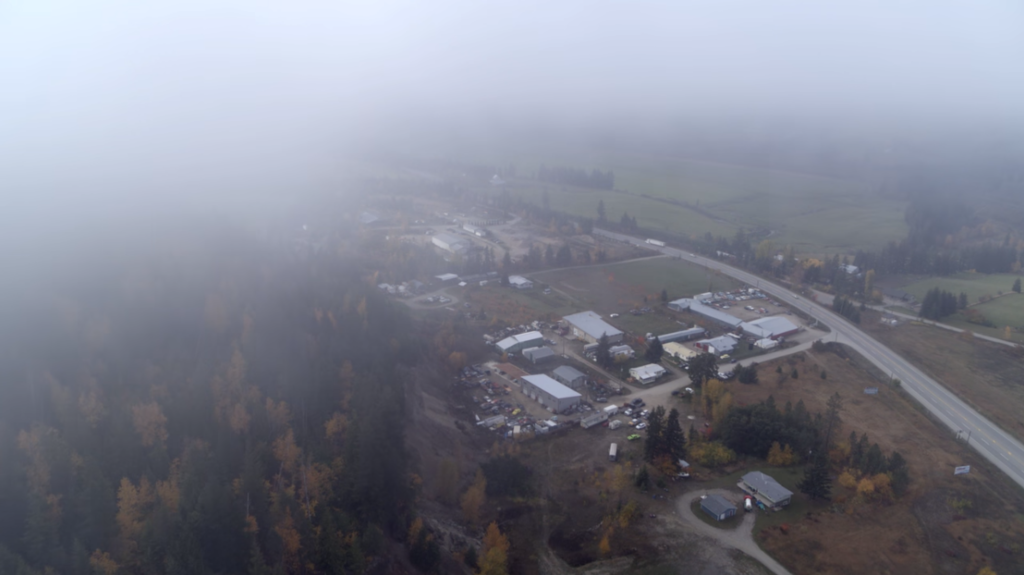
This is a time of downpours and sudden snow. Beyond the critical need to make money, the bigger concern for Mike and his team is the wet, frost, and physical landscape infiltrating into his car collection. Rain-showers flood his yard, such that the workers have to slog through puddles and expose themselves to cold drips whenever they go outside for parts. Further, every soft-top car in his collection is vulnerable to being squashed under the weight of imminent snow and must be covered up with planks. Finally, the eroding dirt hill-side behind his shop is literally tumbling down onto his material legacy, and he and Connor eventually must climb the cliff to scale back trees at risk of toppling the entire bank.
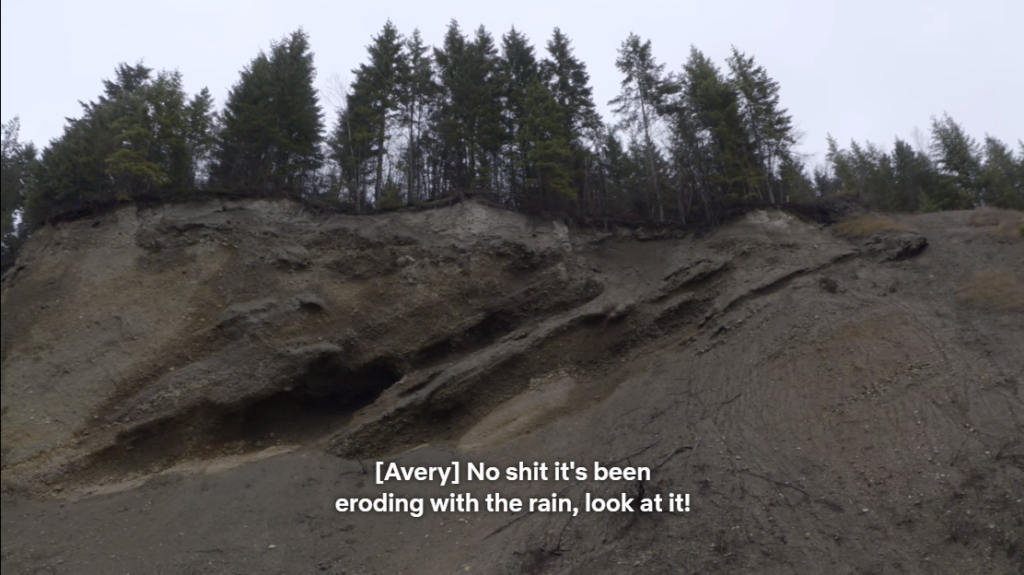
The conflict between Mike and the elements reaches a critical point in this penultimate episode. The core work of restoring cars becomes exponentially more difficult due to nature’s irruption from every angle. The men look quite measly staring up at a bald cliff on the brink of plummeting onto their vulnerable bodies and machines. The wind, rain, and snow that have sculpted this hazard and that continue to chisel it during filming of Rust Valley Restorers cannot be scripted. The elements escape television’s neat confines. This is a storyline that would happen — that happens — whether it’s being captured by a camera or not. The show can increase the drama by filming over days and making edits, but simultaneously, it must wait for nature’s unpredictability in order to capture the footage needed. It’s a poetic meta-moment to realize that even the writers, director, and camera crew of this reality TV series are governed by Rust Valley’s climate.
The frailty of humans and their concoctions is explicitly embodied in the ’41 Ford Super Deluxe, which the shop crew sands down to bare metal that Mike wants to showcase. The only problem is that if the curvaceous raw steel body gets exposed to moisture, “It could rust within seconds,” and the team needs to transport it to the painter’s for a protective clear coat. After a surprise snowstorm hits Rust Valley, Mike and Avery clump around the snowy yard in their heavy jackets and Wellingtons, trying to prepare a caved-in, soggy trailer to transport the naked vehicle. In some way, the exposed car sitting in the warm shop becomes a metaphor for Mike desperately trying to fend off winter from his vehicles, his business, his income — his very being.
Episode 8: “Race to the Finish!”
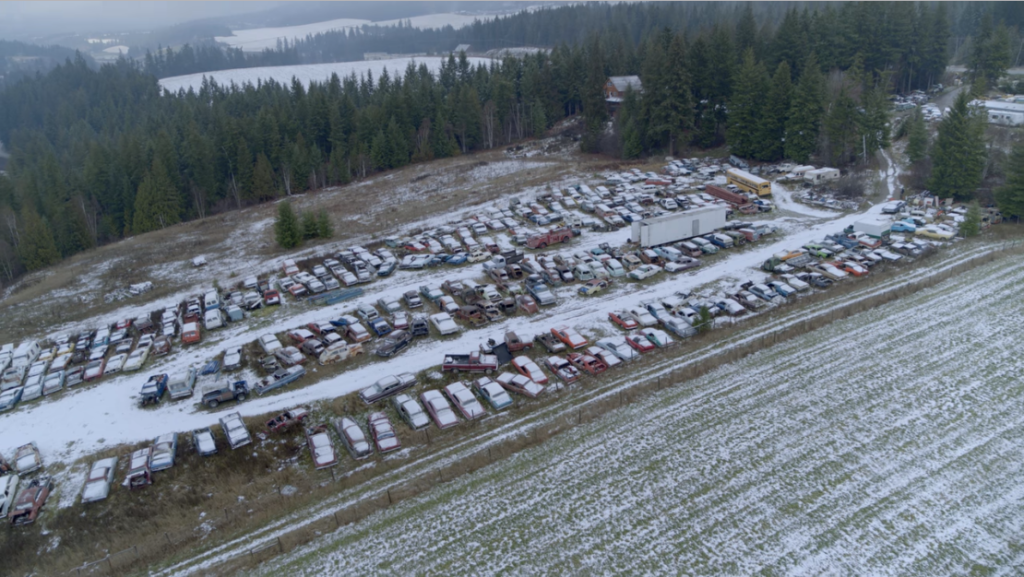
The final episode moves the narrative arc of Rust Valley Restorers to the end-stop of winter. As the camera captures geese flying south, Mike and his crew make a final push to make enough money before the cold freezes everything. Despite their best efforts, Mike realizes that the shop is basically out of money and puts his entire property up for sale. He gets a serious offer, which he ultimately decides to think about, leaving the future of the Rust Bros shop and Rust Valley Restorers in limbo.
The last few shots of the season show snow coating Mike’s collection and all of Rust Valley. These scenes reinforce nature’s power to bring human activity to a halt even as time continues to pass. Season 1 of Rust Valley Restorers, potentially the entire series, the Rust Bros shop, Mike’s “metallic hallucinations,” restoration businesses across Rust Valley, and the audience’s viewing experience are all placed on pause by the unavoidable arrival of winter. There still exists a potential of renewal, just as in the dilapidated cars, but in the meantime, business and entertainment alike must bow down to the environment.
There’s a poetry in that that writers have been magnetized by for millennia, scrawling our silly pieces, trying to fend off the ticking clock with enduring words. I don’t know that Rust Valley Restorers will stand the test of time, but it sure comes face-to-face with it.
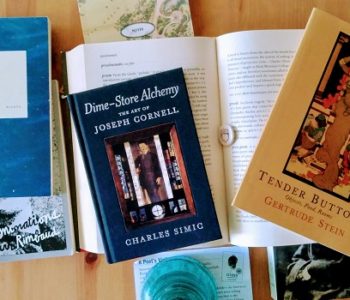

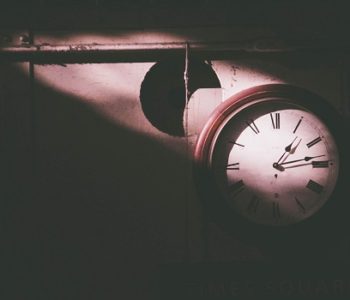
4 COMMENTS
Great analysis of the show! Thank you for your astute appreciation of the visual and aural imagery woven into the storytelling. And the sweeping narrative arc that follows Mike’s homespun efforts to turn back time by restoring these mechanical beauties to their former glory. The only correction I’d like to point out (as the broadcast exec who works with the creators) is that the series is not scripted. Yes, it’s well-crafted – in the shooting, the story editing, the overall editing and the creation of the soundscape and music track. But the guys (Mike, Connor & Avery) are just being themselves – they’re passionate, articulate, funny, profane and knowledgable. And they find joy in their work and in life itself.
RVR is produced by Mayhem Entertainment in association with Corus/HISTORY channel in Canada. And the show lives on… we are currently airing Season 2!
Hi Andrew,
Thanks for stopping by and for the feedback. I really enjoyed Rust Valley Restorer’s unique synthesis of spontaneity, corporeality, and poetry — it results in a richly textured and colorful viewing experience — and am eagerly awaiting Season 2’s release in the US!
-Hannah
Love the show. Cars are fantastic….
I think another element, that sort of fits in with the “Man versus Time” theme, is the idea that it’s not just Mike and his cars that are running out of time, but the whole car culture in general. Jeremy Clarkson touched on this in the season finale to Top Gear a few years back (https://www.youtube.com/watch?v=5Q0Svvdrx_E), and the whole Rust Bros series gave me an end of an era feeling.
I really enjoyed both the series, and your analysis. Thank you.